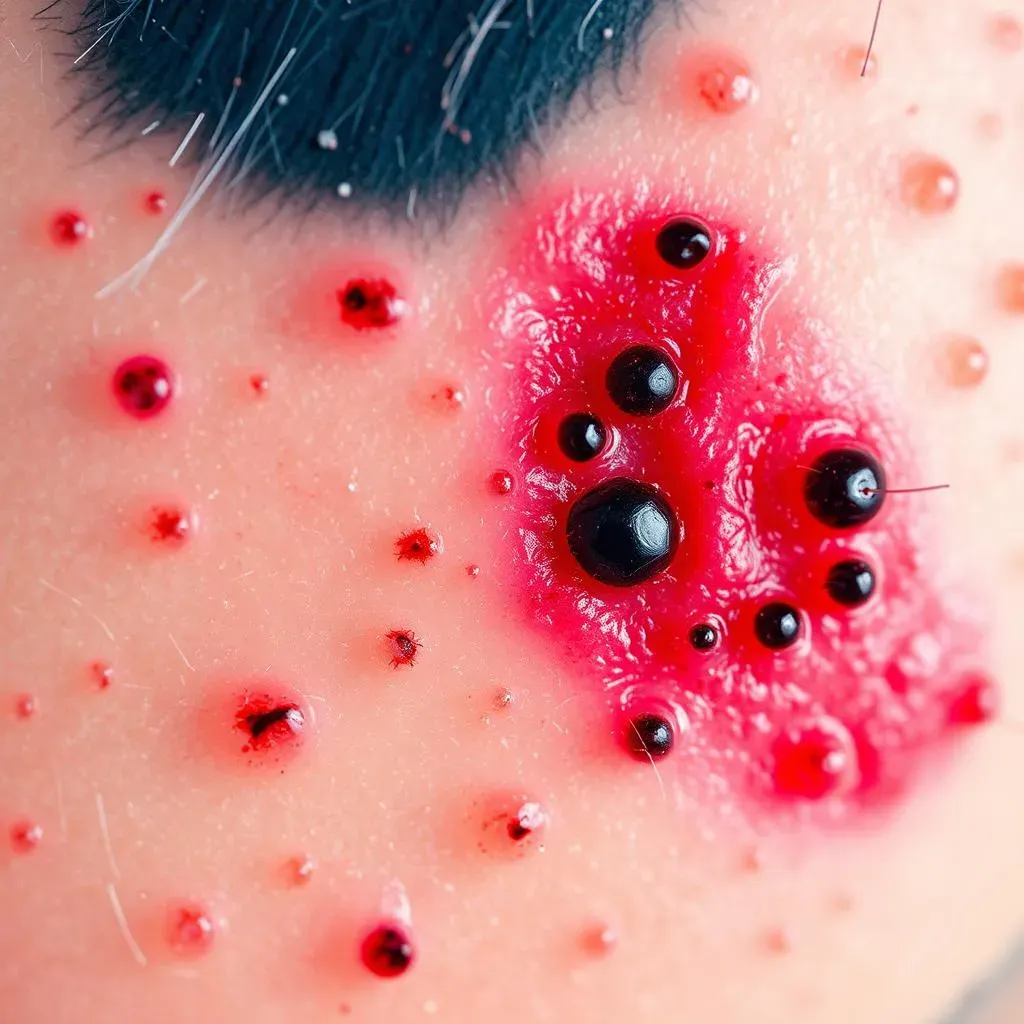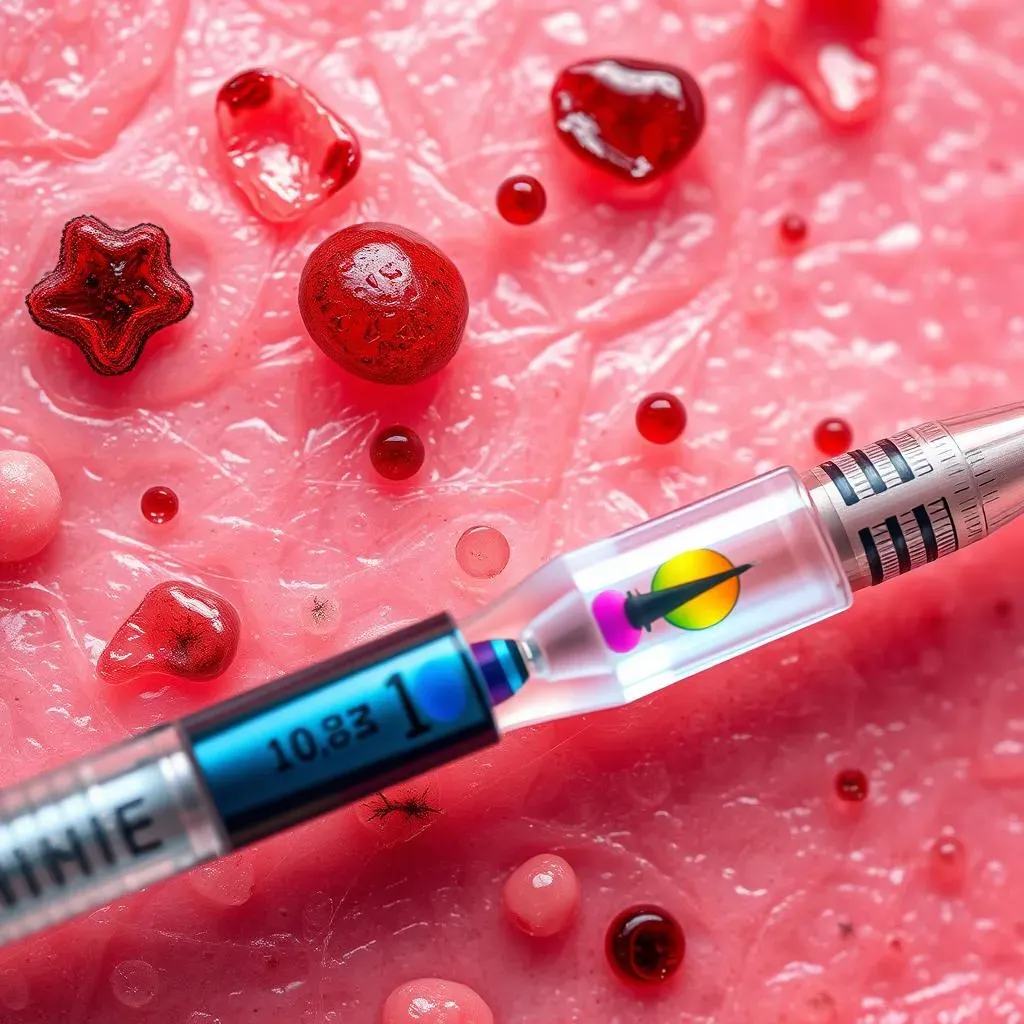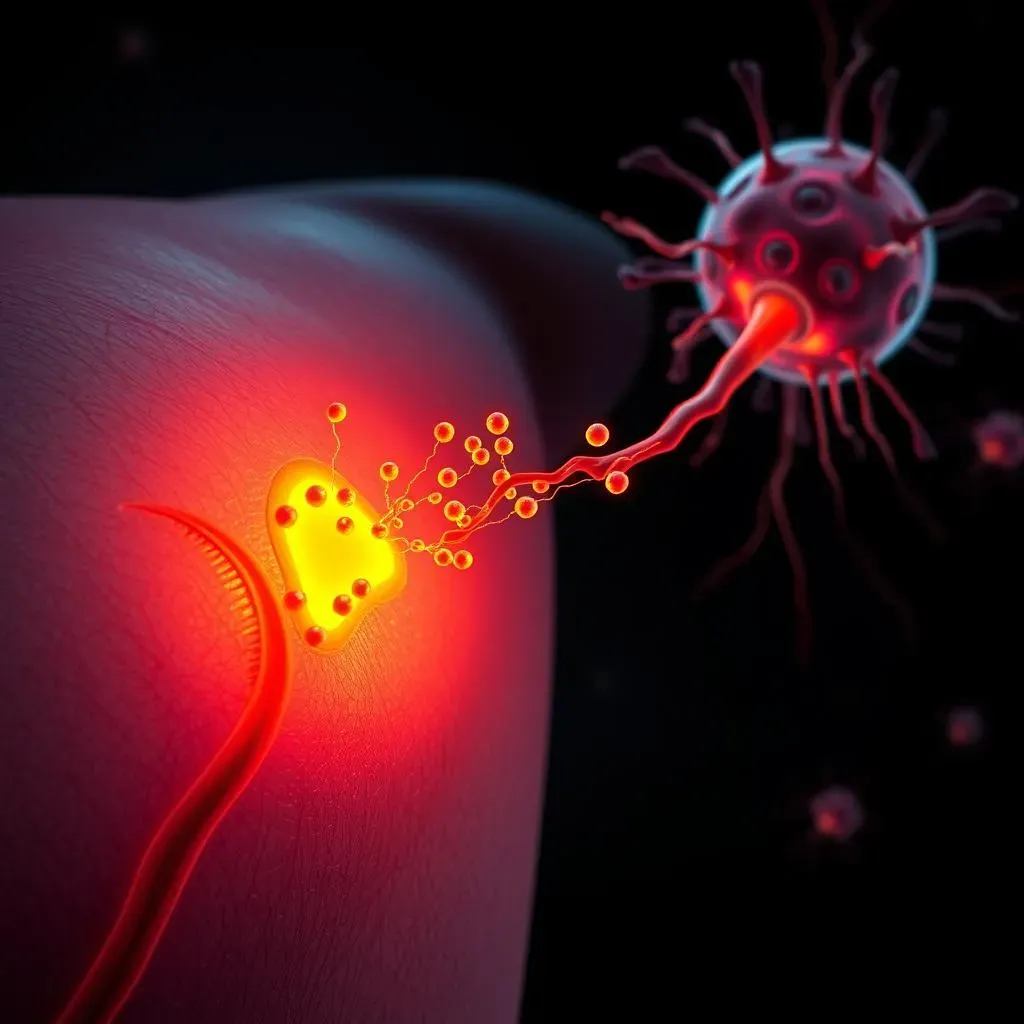Table of Contents
Tattoos have exploded in popularity, transforming from a counter-culture statement into a mainstream form of self-expression. But amidst the vibrant colors and intricate designs, a crucial question often lingers: is tattoo dangerous? While body art can be a beautiful way to tell your story, it's essential to be aware of the potential medical risks lurking beneath the surface. From the historical context of unregulated tattoo inks to the increasing concerns about nanoparticles, this article dives deep into the potential health hazards associated with tattoos.
Tattoo Health Risks: Mild and Advanced Complications
Tattoo Health Risks: Mild and Advanced Complications
Immediate Reactions: What's Normal, What's Not
So, you've just gotten inked – congrats! But let's be real, the process isn't exactly a walk in the park. It's normal to experience some redness, swelling, and mild pain immediately after getting a tattoo. Think of it like a scrape or a minor burn; your body's natural response is to kickstart the healing process. However, knowing the difference between a typical reaction and a complication is key. Excessive bleeding, intense pain that doesn't subside, or a fever are red flags that warrant a trip to the doctor. Don't tough it out – get it checked!
One of the most common immediate reactions is inflammation. The body recognizes the tattoo ink as a foreign substance and mounts an immune response. This can lead to localized swelling, itching, and discomfort. Proper aftercare, including keeping the area clean and moisturized, is crucial to minimize inflammation and prevent further complications. Ignoring aftercare instructions is like inviting trouble to the party – and trust me, you don't want that kind of guest.
Long-Term Complications: When Ink Turns on You
While initial reactions are common, some complications can creep up months or even years after getting a tattoo. These long-term issues can range from persistent allergic reactions to more serious problems like skin infections. One potential issue is the development of granulomas, which are small nodules that form around tattoo pigment. These can be itchy, painful, and may require medical treatment to resolve. Sarcoidosis, a systemic inflammatory disease, can also manifest in tattoos, causing raised, discolored areas.
Another concern is the potential for tattoo inks to interfere with MRI scans. In rare cases, the metal-based pigments in some inks can heat up during an MRI, causing discomfort or even burns. While this is uncommon, it's important to inform your doctor about your tattoos before undergoing an MRI. It's always better to be safe than sorry, especially when it comes to your health.
Ever wonder about the regulations surrounding tattoo inks? The truth is, they're surprisingly lax. The FDA doesn't heavily regulate tattoo inks, meaning that some inks may contain harmful substances or contaminants. This lack of oversight can increase the risk of adverse reactions and long-term health problems. That's why it's crucial to choose a reputable tattoo artist who uses high-quality, sterile inks from trusted suppliers. Do your research and don't be afraid to ask questions about the inks they use.
Complication | Symptoms | Potential Causes | When to Seek Medical Attention |
|---|---|---|---|
Infection | Redness, swelling, pus, pain, fever | Unsterile equipment, poor aftercare | Immediately |
Allergic Reaction | Itching, rash, hives, swelling | Ink components | If severe or persistent |
Granulomas | Small nodules around tattoo pigment | Immune response to ink | If painful or bothersome |
Hidden Dangers: Ink Ingredients and Your Health
Let's talk about what's actually in tattoo ink. It's not always pretty. Many tattoo inks contain heavy metals like lead, mercury, and arsenic, as well as other potentially harmful chemicals. These substances can leach into the bloodstream and accumulate in the body over time, potentially leading to long-term health problems. Some studies have even linked certain tattoo ink components to an increased risk of cancer.
Black inks, for example, often contain carbon black, a known carcinogen. Red inks may contain mercury sulfide, which can cause allergic reactions and other health issues. Blue and green inks often contain cobalt and chromium, which can also be toxic. While the risks are relatively low, it's important to be aware of what you're putting into your body. Knowledge is power, and in this case, it could save you from a lot of trouble down the road.
It's not all doom and gloom, though. Some tattoo ink manufacturers are starting to produce safer, more natural inks that are free from harmful chemicals. These inks are often made from plant-based pigments and other non-toxic ingredients. While they may be more expensive, they can offer a safer alternative for those concerned about the potential health risks of traditional tattoo inks. Always ask your tattoo artist about the types of inks they use and whether they offer safer alternatives.
Infections and Allergic Reactions: Is Getting a Tattoo Dangerous?
Infections and Allergic Reactions: Is Getting a Tattoo Dangerous?
The Infection Invasion: How Tattoos Can Go Wrong
let's get real about infections. You're creating an open wound when you get a tattoo, and any open wound is an invitation for bacteria to crash the party. Staph, strep, and even more serious infections can occur if proper hygiene isn't followed. This isn't just about the tattoo artist's cleanliness; it's also about your aftercare. Think of your new tattoo like a newborn baby – it needs constant attention and care to stay healthy. Symptoms of an infected tattoo include excessive redness, swelling, pus, pain, and even fever. If you notice any of these, don't wait – see a doctor ASAP.
So, how do you prevent an infection from ruining your ink? First and foremost, choose a reputable tattoo artist who uses sterile equipment and follows strict hygiene protocols. Make sure they're licensed and that their studio is clean and well-maintained. Don't be afraid to ask questions about their sterilization practices. Once you leave the studio, it's up to you to keep the area clean and protected. Follow your artist's aftercare instructions to the letter. This usually involves washing the tattoo gently with mild soap and water, applying a thin layer of ointment, and keeping it covered with a bandage or protective film. Avoid picking, scratching, or touching the tattoo with dirty hands. Remember, your tattoo is an investment – protect it!
Allergic Reactions: When Your Body Rejects the Ink
Now, let's talk about allergies. Allergic reactions to tattoo ink can range from mild itching and rash to more severe symptoms like hives, swelling, and difficulty breathing. These reactions can occur immediately after getting a tattoo or even years later. Red inks are notorious for causing allergic reactions, but any color can potentially trigger a response. If you have a history of allergies, it's essential to inform your tattoo artist before getting inked. They may recommend doing a patch test to see how your skin reacts to the ink.
What do you do if you suspect you're having an allergic reaction to your tattoo? First, don't panic. Mild reactions can often be treated with over-the-counter antihistamines and topical corticosteroids. However, if you experience severe symptoms like difficulty breathing or swelling of the face or throat, seek immediate medical attention. In some cases, a dermatologist may recommend removing the tattoo to alleviate the allergic reaction. This can be a costly and painful process, so it's best to avoid allergic reactions in the first place by choosing a reputable artist and being aware of your own allergies.
Did you know that some people develop allergies to sunlight on tattoos with yellow ink? It's called photosensitivity. It's just another thing to consider.
Here's a quick guide to help you differentiate between a normal reaction and a potential infection or allergic reaction:
- Normal Reaction: Mild redness, swelling, and tenderness that subsides within a few days.
- Infection: Excessive redness, swelling, pus, pain, fever, and/or red streaks radiating from the tattoo.
- Allergic Reaction: Itching, rash, hives, swelling, and/or difficulty breathing.
Nanoparticles in Ink: A Hidden Danger in Tattoos?
Nanoparticles in Ink: A Hidden Danger in Tattoos?
What Are Nanoparticles, and Why Should You Care?
Alright, let's get into the nitty-gritty of nanoparticles. These are tiny particles, like, seriously tiny – we're talking about one to 100 nanometers in size. To put that in perspective, a nanometer is one billionth of a meter. These particles are so small they can penetrate cells and tissues, potentially causing cellular damage. Now, why should you care? Well, some tattoo inks contain nanoparticles, and that's where things get a bit concerning. Because of their size, these nanoparticles can behave differently than larger particles, and their impact on the body isn't fully understood yet.
Think of it like this: imagine trying to block a doorway with a bunch of basketballs versus a pile of sand. The basketballs are easier to contain, right? Nanoparticles are like that sand – they can slip through barriers and spread throughout the body more easily. This raises questions about where these particles end up and what effects they might have on our organs and immune system over the long term. It's not necessarily a cause for alarm, but it's definitely something to be aware of.
The Journey of Nanoparticles in Your Body
So, what happens when these nanoparticles from tattoo ink enter your body? Well, studies have shown that they can migrate from the skin to the lymph nodes. Lymph nodes are part of your immune system, and they act as filters for harmful substances. When nanoparticles accumulate in the lymph nodes, it can potentially lead to inflammation and immune system dysfunction. But it doesn't stop there; some research suggests that nanoparticles can even travel to other organs, such as the liver and spleen.
The long-term effects of this migration are still being investigated, but some scientists are concerned about the potential for chronic inflammation, oxidative stress, and even DNA damage. It's important to note that not all tattoo inks contain nanoparticles, and the concentration of these particles can vary widely. However, given the potential risks, it's worth considering the source and composition of your tattoo ink. After all, you're not just injecting color into your skin; you're also introducing potentially mobile particles into your system.
Here's a thought: maybe in the future, we'll have "nano-free" tattoo options, just like we have gluten-free foods. It's all about being informed and making choices that align with your health and well-being.
Minimizing Your Risk: What Can You Do?
Alright, so you're a bit freaked out about nanoparticles now – totally understandable. But don't ditch your tattoo dreams just yet! There are steps you can take to minimize your risk. First and foremost, do your research and choose a reputable tattoo artist who uses high-quality inks from trusted suppliers. Ask them about the composition of their inks and whether they contain nanoparticles. Some manufacturers are now producing inks with larger particle sizes, which may be less likely to migrate throughout the body.
Another thing you can do is to opt for smaller tattoos. The smaller the tattoo, the less ink is used, and the lower the potential exposure to nanoparticles. You can also consider getting tattoos in areas of the body with fewer lymph nodes. While this might not completely eliminate the risk, it could help reduce the burden on your immune system. And of course, always follow proper aftercare instructions to minimize inflammation and promote healing.
Ultimately, the decision to get a tattoo is a personal one. But by being informed about the potential risks and taking steps to minimize your exposure to harmful substances, you can enjoy your body art with greater peace of mind. Knowledge is power, my friend – wield it wisely!
Risk Factor | Mitigation Strategy |
|---|---|
Nanoparticles in Ink | Choose reputable artist, ask about ink composition, opt for larger particle size inks |
Large Tattoo Size | Opt for smaller tattoos |
Location Near Lymph Nodes | Consider tattoo placement away from major lymph node areas |
Tattoo Removal Issues: The Risks of Regret
Tattoo Removal Issues: The Risks of Regret
Laser Beams and Lingering Shadows: How Tattoo Removal Works
so you've got a tattoo that's no longer sparking joy – happens to the best of us! Laser tattoo removal is the most common method, and it works by blasting the tattoo ink with concentrated light energy. This breaks the ink particles into smaller fragments, which your body can then eliminate through its natural processes. Sounds simple enough, right? Well, not quite. The effectiveness of laser removal depends on several factors, including the ink colors, the age of the tattoo, and your skin type. Black and dark blue inks are generally the easiest to remove, while brighter colors like green, yellow, and purple can be more stubborn. Multiple sessions are usually required to fade the tattoo significantly, and complete removal isn't always guaranteed. It's a process, not a magic eraser!
And let's be honest, laser tattoo removal isn't exactly a spa day. It can be painful, often described as feeling like a rubber band snapping against your skin. Some clinics offer numbing creams or local anesthesia to help manage the discomfort. After each session, you can expect some redness, swelling, and blistering. Proper aftercare is crucial to prevent infection and promote healing. This usually involves keeping the area clean and moisturized, and avoiding sun exposure. Think of it as trading one tattoo commitment for another – this time, to the removal process!
Scarring, Fading, and Unforeseen Consequences: The Downside of Removal
While laser tattoo removal can be effective, it's not without its risks. Scarring is one of the most common side effects, especially if the tattoo is large or deeply pigmented. In some cases, the laser can damage the surrounding skin, leading to permanent changes in texture or pigmentation. Hypopigmentation (lightening of the skin) and hyperpigmentation (darkening of the skin) can occur, creating a noticeable difference between the treated area and the surrounding skin. These changes can be particularly noticeable in people with darker skin tones.
Another potential issue is incomplete removal. Even after multiple sessions, some ink may remain visible, leaving behind a faded or patchy tattoo. This can be frustrating, especially if you were hoping for a clean slate. In rare cases, laser tattoo removal can also trigger allergic reactions to the fragmented ink particles. These reactions can range from mild itching and rash to more severe symptoms like hives and swelling. Before undergoing laser tattoo removal, it's essential to consult with a qualified dermatologist or laser technician who can assess your skin and tattoo and discuss the potential risks and benefits. It's all about managing expectations and making informed decisions.
Think of tattoo removal like editing a document. Sometimes, you can clean it up perfectly, but other times, you're left with a few lingering marks or a slightly different font.
Removal Method | Pros | Cons |
|---|---|---|
Laser Removal | Most effective method, can significantly fade or remove tattoos | Can be painful, expensive, may cause scarring or pigmentation changes |
Surgical Excision | Removes tattoo completely | Leaves a scar, only suitable for small tattoos |
Dermabrasion | More affordable than laser removal | Less effective, can cause scarring and pigmentation changes |
Public Knowledge of Tattoo Dangers: What a Recent Study Reveals
Public Knowledge of Tattoo Dangers: What a Recent Study Reveals
Knowledge Gaps: A Reality Check
Alright, so we've talked about the potential dangers of tattoos, but how much do people actually know about these risks? A recent study conducted in Germany aimed to find out. Researchers surveyed over 200 individuals, both tattooed and non-tattooed, to assess their understanding of tattoo-related health risks. The results were, frankly, a bit alarming. Both groups demonstrated a surprisingly low level of knowledge, with over 50% of answers being incorrect. That means a significant portion of people are walking around with tattoos, or considering getting them, without fully grasping the potential consequences. It's like driving a car without knowing the rules of the road – you might get away with it for a while, but eventually, you're going to crash.
The study revealed significant knowledge gaps, particularly concerning the components of tattoo inks and the specific risks associated with different ink colors. Many participants were unaware of the potential presence of heavy metals and other harmful chemicals in tattoo inks. They also underestimated the risk of allergic reactions and infections. What's even more concerning is that there was no significant difference in the level of knowledge between people with tattoos and those without. This suggests that getting a tattoo doesn't necessarily make you more informed about the risks involved. It seems like many people are getting inked based on aesthetics rather than a solid understanding of the potential health implications.
Education is Key: Empowering Informed Decisions
So, what's the solution? Education, plain and simple. The study highlighted the urgent need for public health initiatives to educate individuals about the potential medical risks associated with tattoos. Improved public education can empower individuals to make more informed decisions when considering getting a tattoo. This includes providing accurate information about tattoo ink ingredients, potential allergic reactions, infection risks, and the long-term effects of nanoparticles. It's not about scaring people away from tattoos; it's about ensuring that they're making choices based on knowledge rather than ignorance.
The study also found that higher levels of education were associated with better knowledge of tattoo risks, and individuals with larger tattoos tended to be more informed. This suggests that people with more education and those who have invested more in tattoos are more likely to seek out information about the risks involved. However, it's crucial to reach those who may not have access to this information or who may not be actively seeking it out. Public health campaigns, educational materials in tattoo studios, and online resources can all play a role in bridging this knowledge gap. Ultimately, the goal is to create a society where everyone can make informed decisions about their bodies and their health, regardless of their background or tattoo status.
Conclusion: Informed Decisions for a Safer Tattoo Experience
Ultimately, the decision to get a tattoo is a personal one. However, armed with a better understanding of the potential health risks, individuals can make more informed choices. Our exploration has revealed that, yes, there are dangers associated with tattoos, ranging from allergic reactions to concerns about ink composition and removal challenges. The recent study underscores the need for increased public awareness and education. By staying informed, choosing reputable artists, and prioritizing aftercare, you can minimize risks and enjoy your body art with greater peace of mind. Let's advocate for better regulation and transparency in the tattoo industry to ensure a safer experience for everyone.